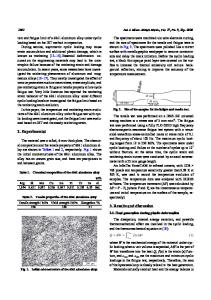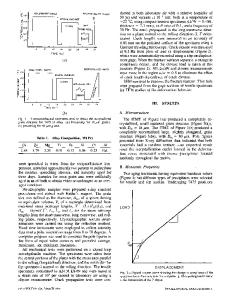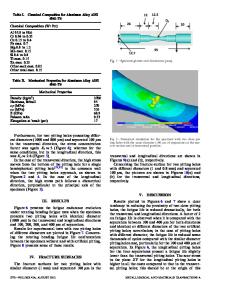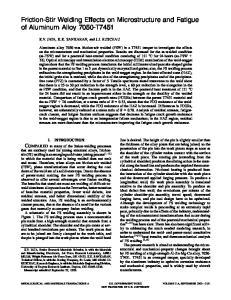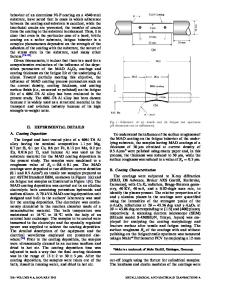Microstructure and Low-Cycle Fatigue of a Friction-Stir-Welded 6061 Aluminum Alloy
- PDF / 2,021,746 Bytes
- 16 Pages / 593.972 x 792 pts Page_size
- 92 Downloads / 298 Views
UCTION
HEAT-TREATABLE 6xxx-series aluminum alloys, containing magnesium and silicon as major alloying elements, are of particular interest due to their attractive combinations of properties as structural materials for the automotive and aerospace applications, i.e., medium strength, high strength and stiffness-to-weight ratios, formability, fatigue resistance, corrosion resistance, and relatively low cost.[1–3] 6xxx-series aluminum alloy accounts for a large percentage of the total aluminum production in the world.[4] The application of 6xxxseries aluminum alloy in the aerospace and automotive industries involves welding and joining. It is relatively difficult to weld the aluminum alloys using the fusion welding processes. Friction stir welding (FSW), invented at The Welding Institute (Cambridge, United Kingdom) in 1991, provides a promising solution since it is an environmentally friendly, energy-effective, and versatile solid-state joining technique that offers significant A.H. FENG, formerly Postdoctoral Fellow, Department of Mechanical and Industrial Engineering, Ryerson University, Toronto, ON M5B 2K3, Canada, is Associate Professor, School of Materials Science and Engineering, Harbin Institute of Technology, Harbin 150001, P.R. China. D.L. CHEN, Professor and Ryerson Research Chair, are with the Department of Mechanical and Industrial Engineering, Ryerson University. Contact e-mail: [email protected] Z.Y. MA, Professor, is with the Shenyang National Laboratory for Materials Science, Institute of Metal Research, Chinese Academy of Sciences, Shenyang 110016, P.R. China. Manuscript submitted December 6, 2009. Article published online June 22, 2010 2626—VOLUME 41A, OCTOBER 2010
benefits over conventional joining processes due to the absence of the fusion zone.[5,6] This joining technique has been proven to be a good alternative especially for the aerospace materials such as 6xxx-series aluminum alloys. FSW of aluminum alloys has prompted considerable scientific and technological interest because of the difficulties of ensuring the integrity and reliability of joints of lightweight alloys using traditional fusion welding. The advances in this area over the past nearly two decades have been well documented in several excellent overview articles, e.g., References 6 through 8. Recent research into the FSW or friction stir processing (FSP) of 6xxx-series aluminum alloys includes precipitation sequence,[9–13] dislocation density,[14] texture,[15–18] and mechanical properties.[19–21] From an engineering design perspective, fatigue properties of FSW aluminum alloys are of particular importance. This has led to increasing research interest in evaluating the fatigue resistance of friction-stir-welded joints, including stress– number of cycles to failure (S-N) behavior[22–25] and fatigue crack propagation behavior.[6,26–28] However, studies on the low-cycle fatigue (LCF) behavior of the friction-stir-welded aluminum alloys have been limited,[29–31] and they are indeed required by automobile manufacturers to estimate the lifetime of co
Data Loading...
